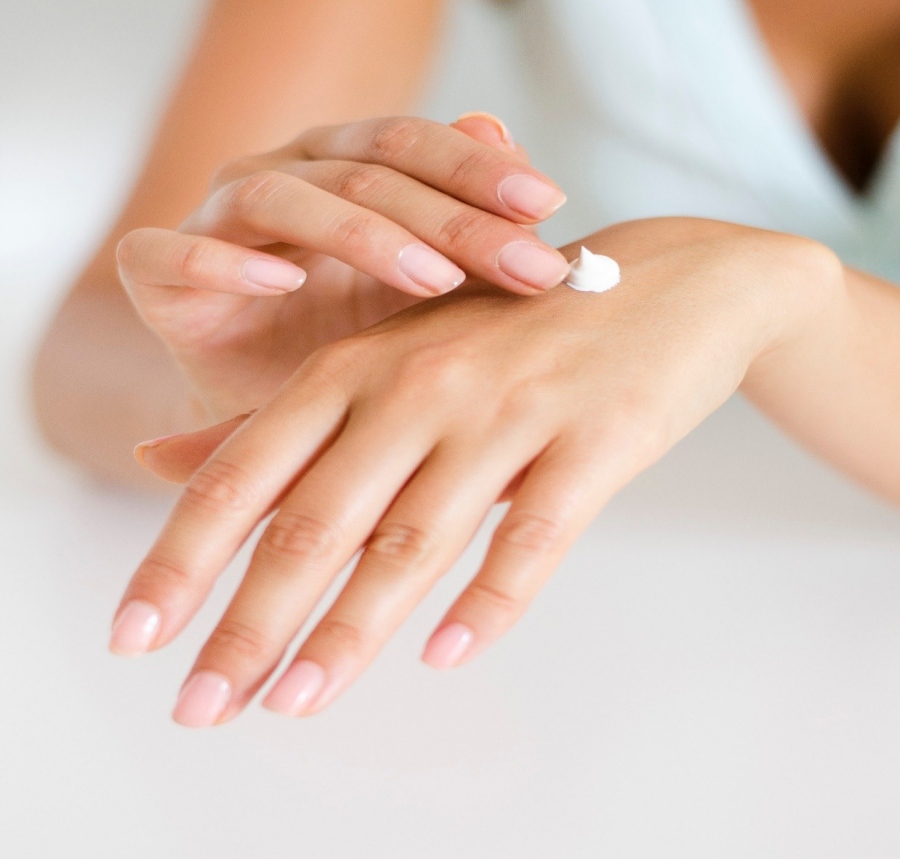Chilly winters and hot summers can cause dry patches on the skin that are very uncomfortable and unappealing to look at. Applying a generous amount of lotions and hydrating creams may work sometimes but other times you need something more aggressive to get rid of the dryness.
To clear your skin from the extra dryness you need to go a little overboard to reveal your soft skin back.
Here are 5 easy steps that can help you get rid of dry patches on your skin.
Step 1: Exfoliate
Exfoliate your skin at least 3 times a week. Use a gentle exfoliating scrub (coconut scrub works the best), and an exfoliating sponge to scrub off the dead skin. Exfoliating is important to remove the dry skin patches that prevent moisture from reaching deep into your skin.
Avoid scratching as it could cause more serious skin problems and could lead to a viral infection.
After exfoliating, gently pat with a soft towel, refrain from rubbing as it can make dry patches worse.
Exfoliating increases blood circulation, break down cells and encourage new cells to grow, doctors suggest drinking lots of water, which will fasten the healing process and flush away the harmful toxins.
Step 2: Moisturize
Apply moisturizer on the dry patches immediately after a shower. Applying lotion while the skin is damp helps in locking the moisture that is already present in the skin.
Ask your dermatologist to recommend a moisturizer that contains alpha hydroxyl acids and avoid products that have strong fragrances and colors. Choosing a good moisturizer is necessary because the chemicals can sometimes react against your skin and cause rashes. Check the ingredients before buying a moisturizer. It should contain glycerin, hyaluronic acid, and propylene glycol. Remember there are different moisturizers for face, hands, and feet. Make sure you choose the right one.
You may also apply some moisturizer before going to the bed at night.
Step 3: Soak
Soak affected areas in warm water to soften the dry patches. You can add some conditioner and Epsom salt in the water and let your body soak for 5 to 10 minutes. Also take a handful of the exfoliating scrub and slough away the rough dry patches.
Adding salt in warm water helps maintain the wellbeing of your skin. It includes minerals like sulfur, calcium, sodium, magnesium, silicon, boron, potassium and bromine. The combination of these chemicals not only heals dry skin but also regulates blood sugar levels, heart problems, and body weight.
You can also add some amount of olive oil, coconut oil and jojoba oil in the water after soaking for a couple of minutes. These oils help absorb and lock the moisture into the skin. Once you’re done, apply body butter to soften the skin.
Step 4: Apply Milk
Milk has lactose and certain antioxidants that helps in keeping the skin soft and smooth. Apply milk to the dry patches a few times every week. Moisten a towel with cold milk and place it on the dry patches for 5-8 minutes. This allows the moisture to set into your skin and heal the dead patches.
Raw milk contains vitamin B, vitamin A, biotin, vitamin B12, alpha hydroxyl acids and calcium that repairs skin not just from the outside but the inside as well.
The biotin present in milk helps dry and patchy skin heal. It also revitalizes cracked heels and ankles. Apart from curing dry patches, milk also aids in lightening tanned skin, exfoliating skin cells, and healing sunburns.
Step 5: Apply Aloe Vera
Aloe Vera is a natural antioxidant that fights germs and heals sunburns and acne. If you have dry patches due to a sunburn, apply Aloe Vera gel 2-3 times a day to see effective results. Apart from healing damaged skin it also acts as a natural cleanser, brightens skin, and serves as a scrub for both hair and skin.
The gentle exfoliation action of Aloe Vera helps get rid of dead skin, reduces blemishes and repairs damaged skin.
Here are a few more tips that can help your skin heal:
Tips
If dry skin worsens or doesn’t get better, visit your dermatologist or schedule an online appointment using a HIPAA compliant telemedicine app.
When treating dry skin, drink plenty of water as it hydrates your skin and retains the natural moisture. Hydrating your body from inside will show effective results on the outside.
Experts recommend drinking 8-10 glasses of water daily. Avoid taking showers with cold water. Instead, opt for warm showers to soften the dry patches and use cleansers and toners that are mild.
